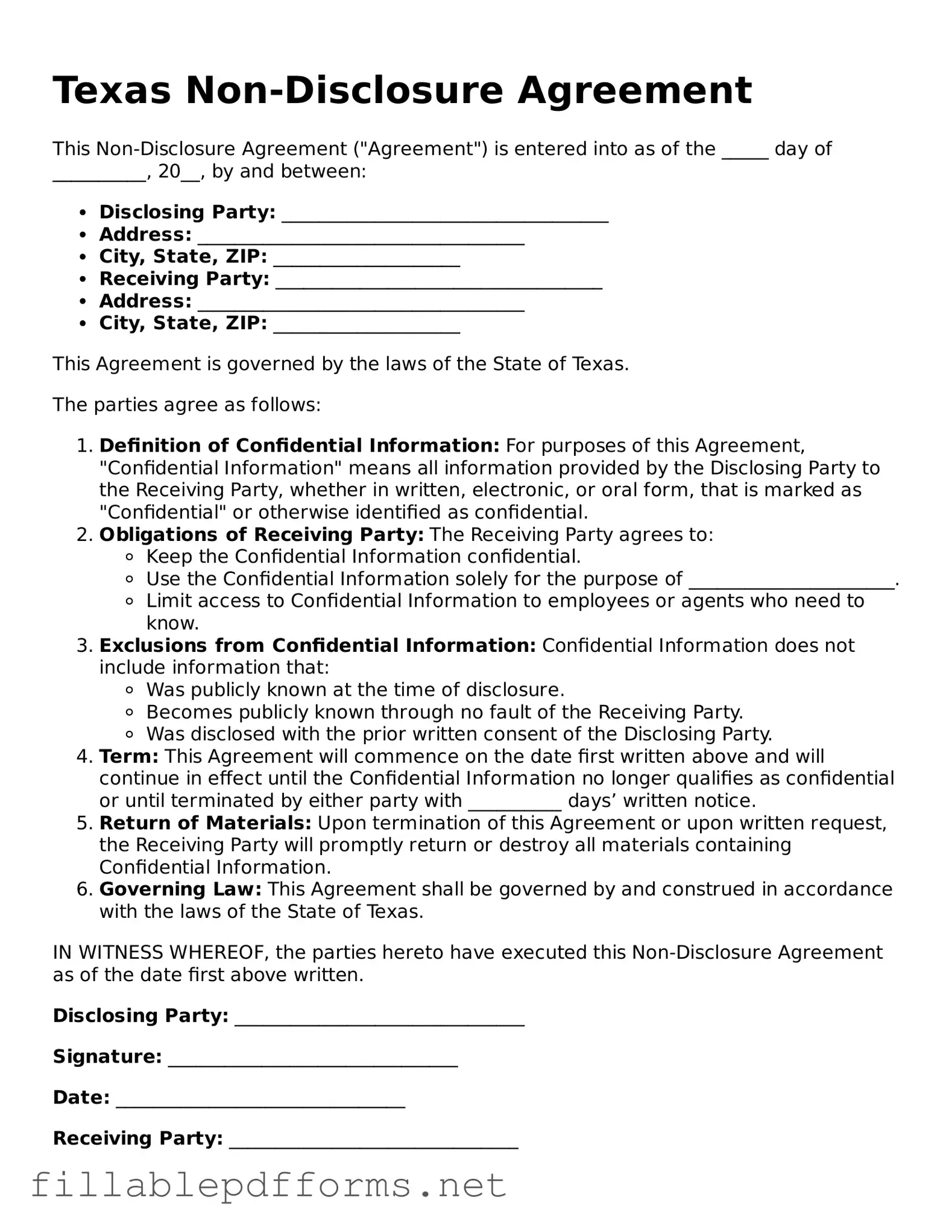In the realm of business transactions and professional relationships, the Texas Non-disclosure Agreement (NDA) form serves as a crucial tool for protecting sensitive information. This legally binding document establishes a framework that governs the sharing of confidential data between parties. Typically, it outlines the specific types of information considered confidential, such as trade secrets, proprietary data, and client lists. The NDA also delineates the obligations of the parties involved, ensuring that the recipient of the confidential information understands their responsibility to keep it secure. Additionally, the agreement specifies the duration of confidentiality, which can vary based on the nature of the information and the relationship between the parties. By setting clear boundaries, the Texas NDA helps to foster trust and collaboration while minimizing the risk of information leakage that could harm a business's competitive edge. Understanding the essential components of this form is vital for anyone looking to engage in a partnership or employment arrangement in Texas, as it not only protects intellectual property but also lays the groundwork for a respectful and productive working relationship.
